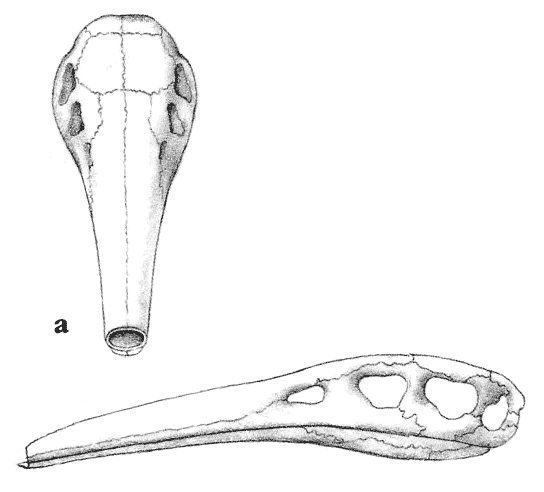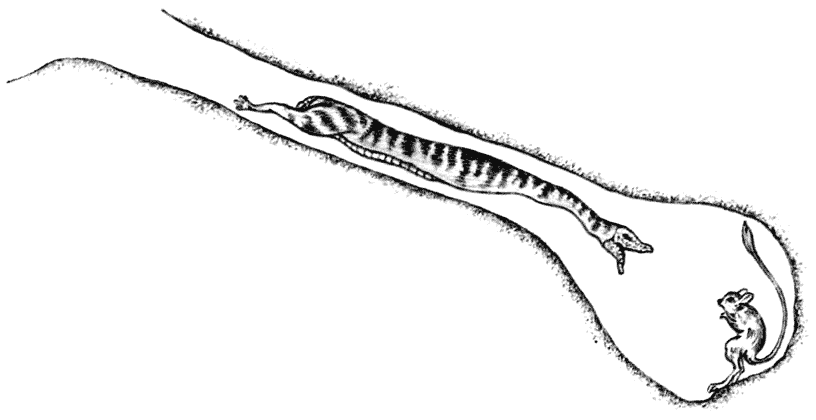| Main | Site library | Forum | Guestbook |
 |
THE NEW DINOSAURS The distribution of the continents and their environments in the world
today is a legacy of the geological history of the planet, and of the
current climatic zones. Each continent, or zoogeographic realm, has
its own assemblage of wildlife. The particular group is determined
by the flexibility of the boundaries to that realm, and by the past
geological existence of those boundaries. During the Triassic and early
Jurassic periods there was only one zoogeographic realm. The land areas
of the world were united as part of the supercontinent of Pangaea and
the same assemblage of animals was found everywhere. Since that time
Pangaea has split up into individual continents, and remnants of the
original fauna have developed independently in each continent. The
animal life in a modern realm may be unique if the boundaries are precisely
defined and impassable and have been so for tens of millions of years.
On the other hand, the realm may reveal an assemblage that shares many
species with its neighbouring realm, if the boundaries are ill-defined
and easily crossed. |
THE ETHIOPIAN REALM
|
|
 |
|
|
|
|||
|
|
|
|
 |
|||
|
|
|
|
 |
The long face of the lank means that its eyes are still above the level of the grass even when its snout is grazing at the grass roots. It can thus keep an eye open for danger. On the open plains danger can be seen coming from afar, and the lank’s long legs give it the speed needed to escape from predators.
|
||
It is difficult to
believe that the lank’s front legs are evolved from pterosaurs’ wings.
The fourth finger, that once supported the flight membrane, now carries
the animal’s weight and has a hoof on the end. The three small claws
that once acted as a hand are now only used for grooming the animals
fine fur.
|
 |
 |
|
|
|
|
The back of the wyrm is covered with fine hair. The rest of its body is armoured by a network of scales. The head is a scaly shield (a). A row of heavy transverse scales runs the full length of its underside (b) protecting its belly from the constant abrasion of sand and stones as it winds its way along. A heavy shield of scales covers the rump (c), to protect it from members of its own species that may pursue it down the tunnels of its prey. |
|
|
|||
|
|
||

The sandle feeds on small vertebrates, insects and scorpions. It lies in wait just under the sand, with only its eyes and nostrils showing, and leaps out when the prey comes close. |
|||
|
|
|
 |

|
|
|
||
|
|
 |
The dwarf megalosaur is a very agile and nimble animal. It usually hunts singly and can prey on the many seabirds that feed in flocks along the tideline. The megalosaur is athletic enough to sprint along the beach and snatch the birds out of the air as they flutter in panic into the sky. |
|
|
CONTENTS
FOREWORD
THE GREAT EXTINCTION 6
WHAT IS A DINOSAUR? 10
THE NEW TREE OF LIFE 12
PALAEOGEOGRAPHY 16
ZOOGEOGRAPHY 18
THE HABITATS 20
THE NEW DINOSAURS 29
THE ETHIOPIAN REALM 30
THE PALAEARCTIC REALM 42
THE NEARCTIC REALM 54
THE NEOTROPICAL REALM 66
THE ORIENTAL REALM 78
THE AUSTRALASIAN REALM 88
THE OCEANS 100
CONCLUSION 108
AFTERWORD 109
GLOSSARY 113
FURTHER READING 115
INDEX 116
ACKNOWLEDGEMENTS 120
 The
continent that contains the Ethiopian realm is almost an island. Its
broadest section lies north of the equator, where it stretches
7.000 kilometres (4,350 m) from east to west. South of the equator
it narrows to about 3.000 kilometres (1.900 m) as it reaches to
its rounded tip in the far south. From south to north the continent
is
about 7.000) kilometres (4,350 m) long. It is joined to the main
northern continent only by a narrow isthmus in the north-east. The
Ethiopian
realm occupies the whole of this area except for a strip along
the northern edge. The boundary that separates it from the Palaearctic
realm in the north is the vast expanse of inhospitable desert that
stretches across the continent’s widest portion.
The
continent that contains the Ethiopian realm is almost an island. Its
broadest section lies north of the equator, where it stretches
7.000 kilometres (4,350 m) from east to west. South of the equator
it narrows to about 3.000 kilometres (1.900 m) as it reaches to
its rounded tip in the far south. From south to north the continent
is
about 7.000) kilometres (4,350 m) long. It is joined to the main
northern continent only by a narrow isthmus in the north-east. The
Ethiopian
realm occupies the whole of this area except for a strip along
the northern edge. The boundary that separates it from the Palaearctic
realm in the north is the vast expanse of inhospitable desert that
stretches across the continent’s widest portion.







 The wyrm is
long enough and narrow enough and agile enough to chase its prey
down
their burrows. Its diet consists mostly of the small hopping mammals
that have evolved to live in the desert.
The wyrm is
long enough and narrow enough and agile enough to chase its prey
down
their burrows. Its diet consists mostly of the small hopping mammals
that have evolved to live in the desert.

